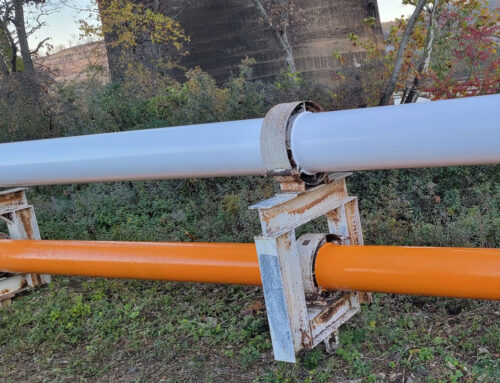Top 5 Mega Rule Compliance Issues We See and What We Recommend
Our bread and butter are inspecting, repairing, and replacing coatings that, if not remedied, will result in losing Mega Rule compliance. We commonly discover corrosion during the coating assessment and pipeline segment process, which fits into the categories of routine, semiannual, and annual maintenance. In other cases, we are helping pipeline operators to fix emergencies after major flooding or other calamities that caused significant damage.
As a result of regularly facilitating pipeline compliance with the new standards, our team has honed in on three critical problems in pipeline operations. Read on to learn more.
Before We Begin, Here’s A Quick Recap of Mega Rule Compliance
The first part of Mega Rule compliance requires pipeline operators to analyze pipeline integrity in Moderate Consequence Areas (MCAs). The second part of Mega Rule compliance mandates that pipeline operators continuously monitor internal pipeline corrosion, inspect, and make repairs stemming from corrosive gas damage, and survey damaged pipelines every five feet. The third part of Mega Rule compliance dictates that pipelines meet National Association of Corrosion Engineers (NACA) standards for stress corrosion cracking and internal corrosion direct assessments; most importantly, the third part asks that pipelines be protected and quickly repaired after natural disasters.
The Three Issues We’re Seeing as We Inspect, Repair, and Replace Coatings
1. Lack of Corrosion Expertise
Corrosion is inevitable but manageable. Many pipeline operators do not have an in-house corrosion expert; therefore, they have to hire an outside firm to diagnose and perform corrosion failure analysis. It’s not only costly to bring in consultants. Depending on the market, it can be difficult to locate NACE-certified consultants and then book their time since they have an effective monopoly. In their frustration, some pipeline operators hire so-called corrosion experts without certifications. The consequences are a dearth of documentation and reporting. In addition, asset damage can be overlooked.
2. Developing a Compliance Plan
Currently most pipeline operators–particularly if they are in industries with boom and bust cycles like oil and gas–have to build a compliance plan into their budget based on cost projections. The first draft of a compliance plan almost always needs to be revised. The timelines change. The budget swells. Then, companies develop a new compliance plan, securing new funding to match their projected expenses. It’s an ever-evolving process even during the coating repair and replacement phase.
3. Cost of Technology
Pipeline operations rarely build in enough capital to cover the full breadth of the repairs needed to meet Mega Rule compliance. However, the most commonly unforeseen costs that go over budget are technology-related, including GIS, record retention, reporting, and program gap analysis software. Though they are a pricey part of maintaining compliance standards, they are necessary.
Leverage Our Mega Rule Compliance Experience. Schedule a Consultation with Eagle Eye Services Today.
Don’t let your Mega Rule compliance lapse, causing your company to receive a major fine from the federal government. The team at Eagle Eye Services can help. We specialize in inspecting pipelines in light of Mega Rule’s third-part guidance, determining the scope of repair or replacement, and executing repairs and replacements within the agreed-upon timeline and budget. Contact us today at 724-754-1122 to schedule your appointment.
Ready to Get Started?
Have questions about your project or need a quote? We’ve got someone ready to help you.



